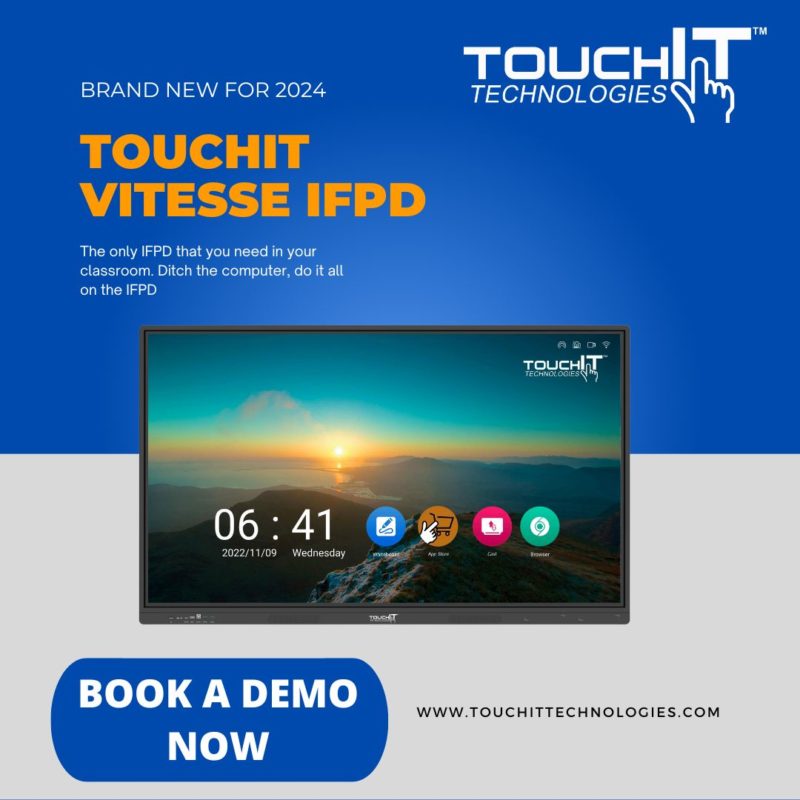In the battle for classroom supremacy, two titans clash: the humble whiteboard and the flashy newcomer, the interactive flat panel (IFP). Both have their loyal followers, but which reigns supreme in the realm of education? Let’s dive into a balanced comparison, analyzing their strengths, weaknesses, and suitability for different scenarios and learning styles.
Interactive Flat Panels: The Shiny New Warrior
Strengths:
- Engaging and interactive: IFPs bring lessons to life with multimedia integration, allowing for videos, simulations,and interactive activities.
- Collaborative learning: Students can work together directly on the screen, fostering teamwork and communication skills.
- Differentiation made easy: IFPs cater to diverse learning styles through annotation tools, audio recording, and screen mirroring.
- Paperless and efficient: Save trees and time with digital documents and lesson sharing.
- Future-proofed: Prepare students for the technology-driven future with cutting-edge learning tools.
Weaknesses:
- Costly investment: IFPs require a significant upfront investment compared to whiteboards.
- Tech dependence: Technical glitches can disrupt lessons, and reliance on electricity makes them vulnerable to power outages.
- Learning curve: Teachers and students need training to fully utilize the IFP’s features.
- Eye strain concerns: Excessive screen time can cause eye fatigue in young learners.
Traditional Whiteboards: The Tried-and-True Champion
Strengths:
- Affordable and accessible: Whiteboards are readily available and relatively inexpensive.
- Simple and reliable: No electricity or complex setup required, making them less susceptible to technical issues.
- Familiarity and ease of use: Teachers and students are comfortable with whiteboards, requiring minimal training.
- Tactile learning: Writing and drawing on the whiteboard can be a valuable kinesthetic learning experience for some students.
- Low barrier to creativity: Whiteboards encourage spontaneous brainstorming and quick visualizations.
Weaknesses:
- Passive learning: Traditional whiteboards offer limited interactivity and can lead to passive learning experiences.
- Accessibility limitations: Students with visual impairments or motor difficulties may face challenges using whiteboards.
- Limited resource integration: Whiteboards cannot easily incorporate multimedia elements or digital resources.
- Messy and impermanent: Markers can dry out, fade, or stain, while erasing can be messy and leave ghost marks.
- Sustainability concerns: Marker use generates waste and can be harmful to the environment.
Who Wins? It Depends…
The victor in this battle depends on the specific context and needs. IFPs shine in classrooms seeking interactivity, collaboration, and future-proofing their learning environment. However, whiteboards remain relevant for their affordability, simplicity, and tactile learning benefits.
Learning Styles Matter:
- Visual learners: Both IFPs and whiteboards cater well to visual learners, although IFPs offer a wider range of visual stimuli.
- Auditory learners: IFPs excel with audio integration, while whiteboards may require additional tools for auditory support.
- Kinesthetic learners: Whiteboards offer the tactile experience of writing and drawing, while IFPs can incorporate kinesthetic games and activities.
The Verdict: Collaboration, Not Competition
Instead of a winner-take-all battle, consider these tools as complementary. IFPs can offer a cutting-edge experience for specific projects or lessons, while whiteboards remain a valuable tool for brainstorming, quick visualizations, and tactile learning. Ultimately, the best classroom utilizes both tools strategically, catering to diverse learning styles and needs while embracing innovation and accessibility.
Remember, the true champion of education is not a particular technology, but the dedication and creativity of teachers who use effective tools to inspire and empower their students.
So, whether you’re team IFP or team whiteboard, let’s focus on what truly matters: fostering a vibrant and engaging learning environment where all students can thrive.


